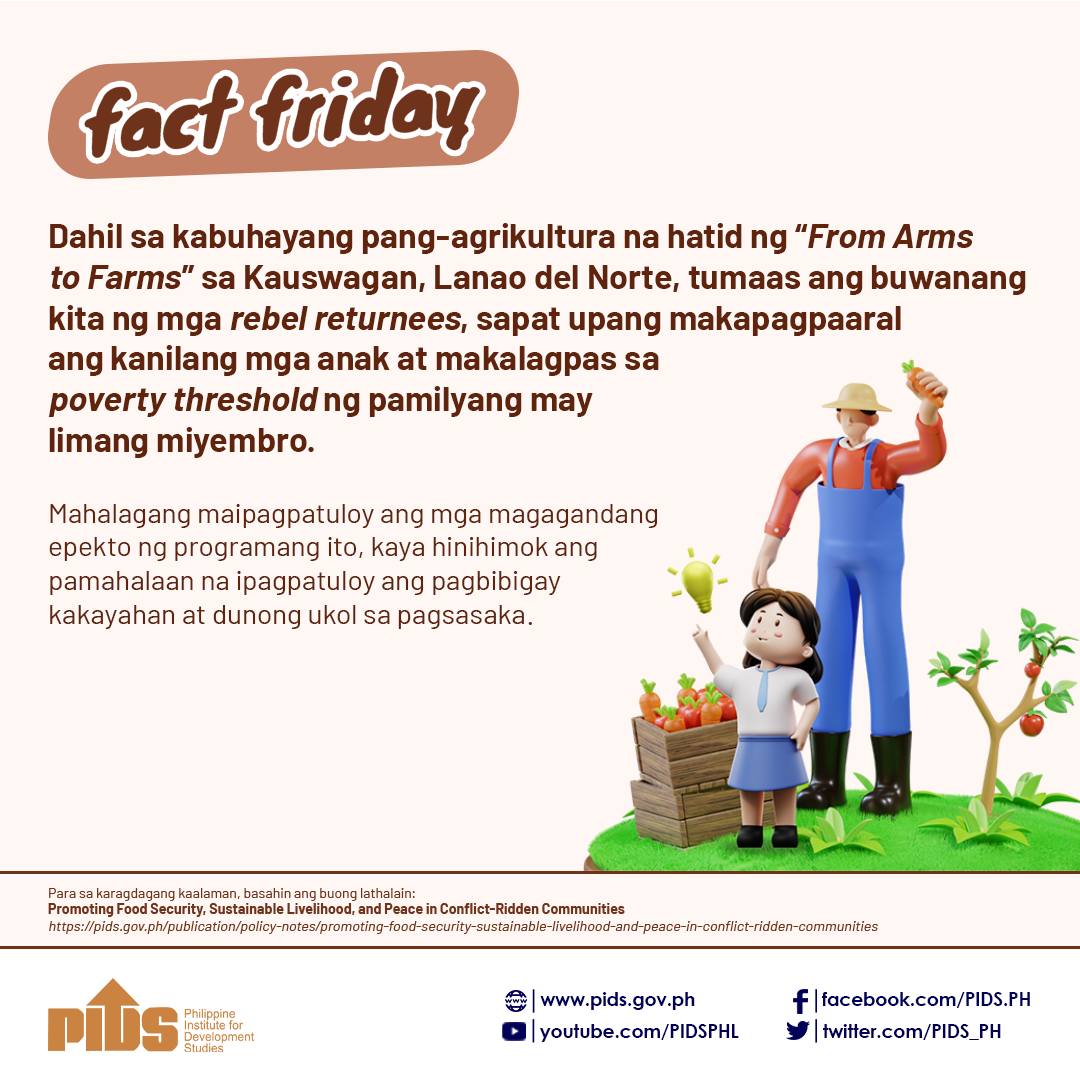There is a need to continue the government’s cash transfer and sustainable livelihood programs in order to improve the country’s performance in meeting the Sustainable Development Goals (SDGs), according to the Philippine Institute for Development Studies (PIDS).
In a news statement, PIDS Senior Research Fellow Jose Ramon Albert said these and other programs like the Kalahi-CIDSS will help improve the Philippines’s performance in achieving the SDGs.
Some of these challenges include the fact that despite high economic growth in recent years, the country still struggled to address high underemployment. The country’s underemployment rate was still at 16 percent.
“This suggests that a considerable proportion of those employed are looking for extra jobs or other jobs, which implies that the quality of jobs in the Philippines needs further improvement,” Albert said.
A way to resolve this, Albert said, is to strengthen the government’s implementation of the Inclusive Innovation Industrial Strategy or i3S, which aims to build new industries and increase the growth of micro, small and medium enterprises, as well as strengthen human resources.
Albert also stressed that the provision of a full and productive employment and decent work is not the sole responsibility of the Department of Labor and Employment (DOLE) but of the whole government system.
He said agencies such as the Department of Trade and Industry, Department of Agriculture, Department of Finance, Department of Budget and Management, National Economic and Development Authority, Department of Education, Technical Education and Skills Development Authority, and the Department of Public Works and Highways should also collaborate with the business community.
These efforts, Albert said, could also help address other development challenges such as reducing income inequality. While economic growth has been high, he pointed out, inequality remains proportionally high in various regions in the country.
“The average per-capita income has been growing at 1.7 percent from 2006 to 2015, with the bottom 40 percent of the income distribution even growing faster at 2.2 percent in the same period,” Albert said.
“Regional income disparities are stark. For instance, the average per- capita income of the National Capital Region is thrice that of the Autonomous Region in Muslim Mindanao,” he added.
The findings were part of the preliminary results of the Philippines 2019 Voluntary National Review (VNR) Report on the SDGs, which was discussed in a recent policy dialogue recently organized by the Institute and the United Nations Economic and Social Commission for Asia and the Pacific.












